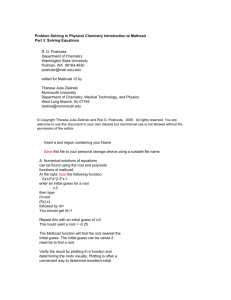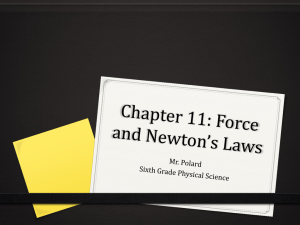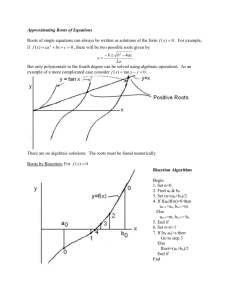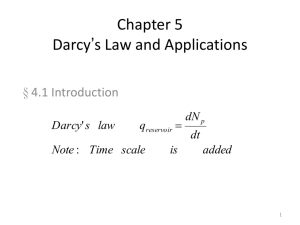Friction Factor Calculation
advertisement
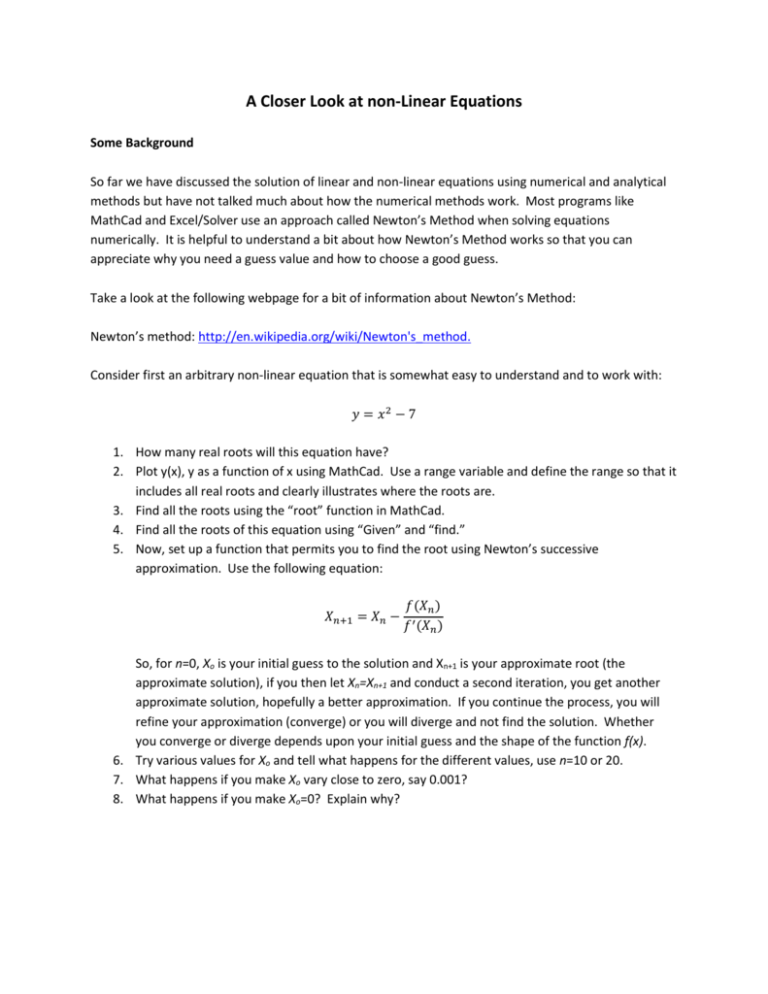
A Closer Look at non-Linear Equations Some Background So far we have discussed the solution of linear and non-linear equations using numerical and analytical methods but have not talked much about how the numerical methods work. Most programs like MathCad and Excel/Solver use an approach called Newton’s Method when solving equations numerically. It is helpful to understand a bit about how Newton’s Method works so that you can appreciate why you need a guess value and how to choose a good guess. Take a look at the following webpage for a bit of information about Newton’s Method: Newton’s method: http://en.wikipedia.org/wiki/Newton's_method. Consider first an arbitrary non-linear equation that is somewhat easy to understand and to work with: 𝑦 = 𝑥2 − 7 1. How many real roots will this equation have? 2. Plot y(x), y as a function of x using MathCad. Use a range variable and define the range so that it includes all real roots and clearly illustrates where the roots are. 3. Find all the roots using the “root” function in MathCad. 4. Find all the roots of this equation using “Given” and “find.” 5. Now, set up a function that permits you to find the root using Newton’s successive approximation. Use the following equation: 𝑋𝑛+1 = 𝑋𝑛 − 𝑓(𝑋𝑛 ) 𝑓 ′ (𝑋𝑛 ) So, for n=0, Xo is your initial guess to the solution and Xn+1 is your approximate root (the approximate solution), if you then let Xn=Xn+1 and conduct a second iteration, you get another approximate solution, hopefully a better approximation. If you continue the process, you will refine your approximation (converge) or you will diverge and not find the solution. Whether you converge or diverge depends upon your initial guess and the shape of the function f(x). 6. Try various values for Xo and tell what happens for the different values, use n=10 or 20. 7. What happens if you make Xo vary close to zero, say 0.001? 8. What happens if you make Xo=0? Explain why? Chemical Engineering Application Now that you understand how non-linear equations are solved, let’s apply it to a problem with a chemical engineering purpose. In fluid dynamics, the amount of work that is done to pump a fluid from one point to another is a function of the amount of friction loss, that energy (work) that is lost due to friction between the fluid and the pipe (tube) wall. The Darcy friction factor (f) is proportional to the pipe roughness (in some references k is used rather than ) the fluid velocity of flow, the pipe diameter and the fluid density and viscosity. The friction factor is an important parameter that is needed in order to compute the amount of work required to pump the fluid. The Darcy friction factor is given by the following rather complex equation: 1 f 𝑅𝑒(𝜌, 𝑣, 𝐷, 𝜇) = 𝜌𝑣𝐷 𝜇 2 log D 3.7 f Re( v D ) 2.51 (this parameter is called the Reynolds’ Number) Take a bit of time to read-up on the frication factor at the following webpage: Darcy frication factor formulae: http://en.wikipedia.org/wiki/Darcy_friction_factor_formulae. For this problem you will have to find reasonable values for , look up “roughness factor,” or “pipe roughness coefficient” and choose a reasonable value. Also, assume that D=0.02 m. You will need to find a value for the viscosity and density of liquid water at 25 oC. Many times in engineering, finding the data is a big part of solving the problem so you might as well get used to it now. Assume a water flow velocity of 10 ft/s, a typical value in process heat exchangers for example. Now let’s find the friction factor using some of the root finding methods we’ve recently learned. 1. Put the function above in its zero form F(f) and plot if for some reasonable range of f values near the root. Approximate the root from your plot and write or type it into your MathCad worksheet. 2. Now, use the “root” function to get a good approximation for the value of f. 3. Also, use “Given” and “find.” 4. Now, use the Newton’s Method that we described above. 5. How important is it in this problem that you have a good guess to the actual value of f? Why (be very specific in answering this question? 6. Find out what the Reynolds’ Number is about and write one or two sentences describing it.


